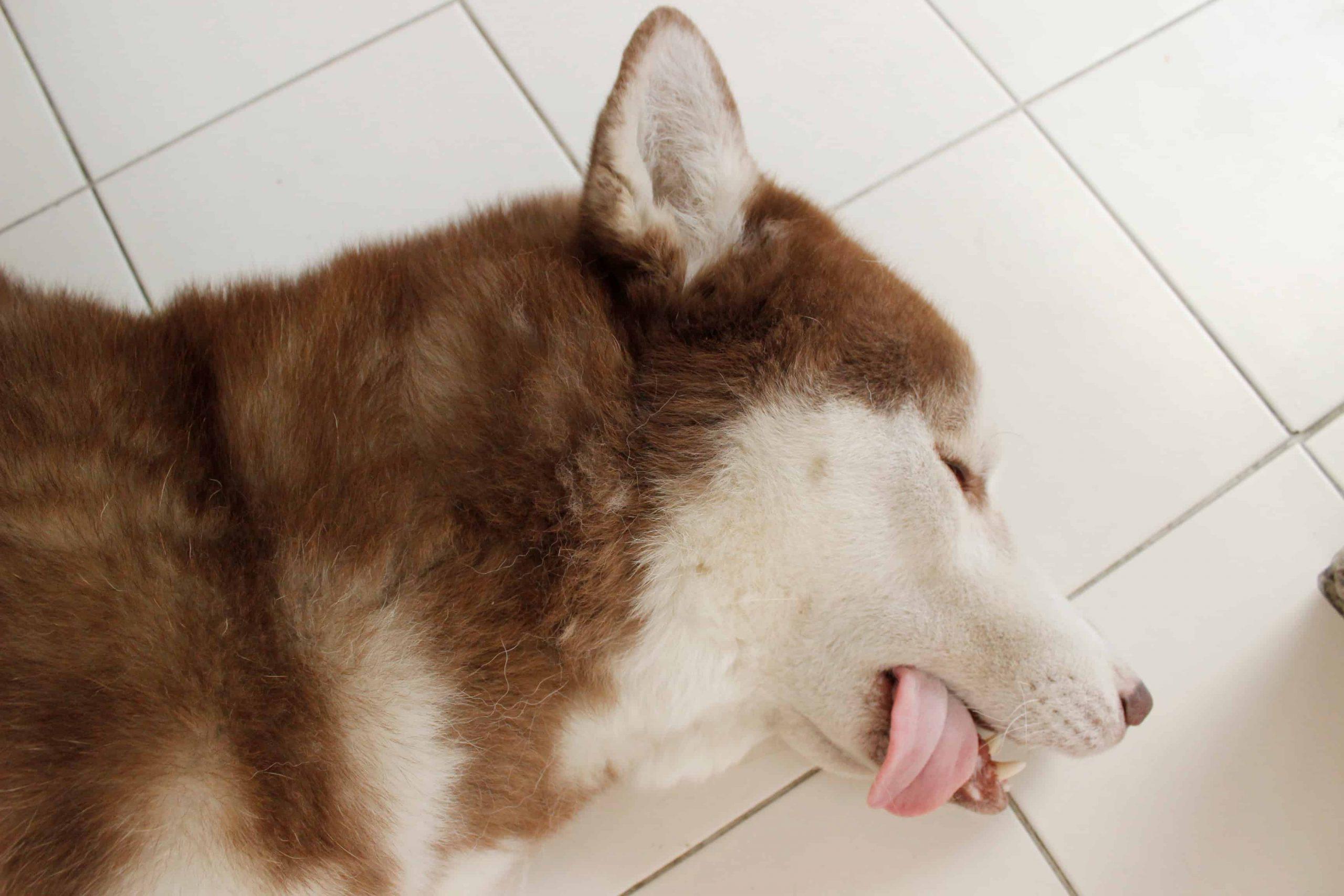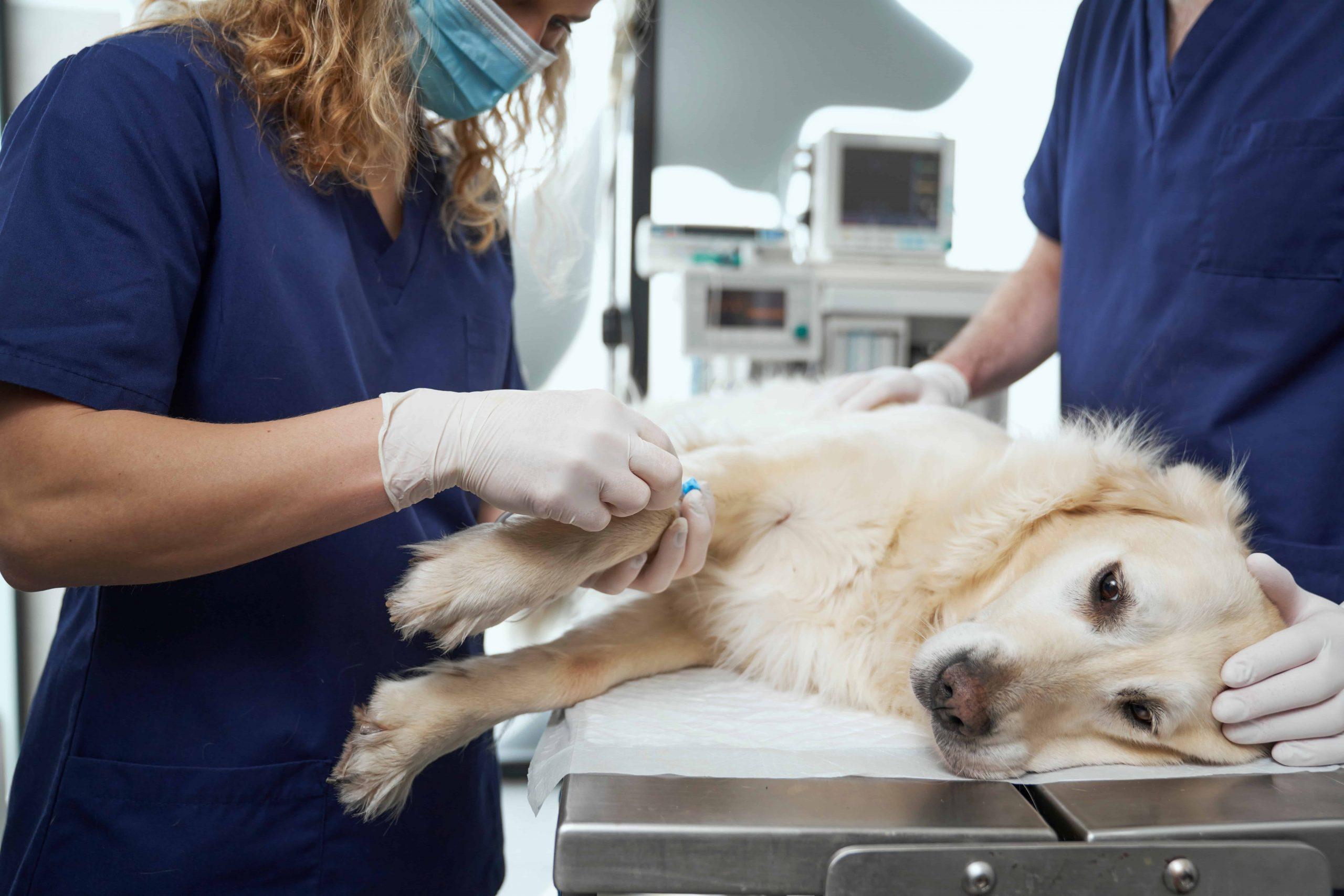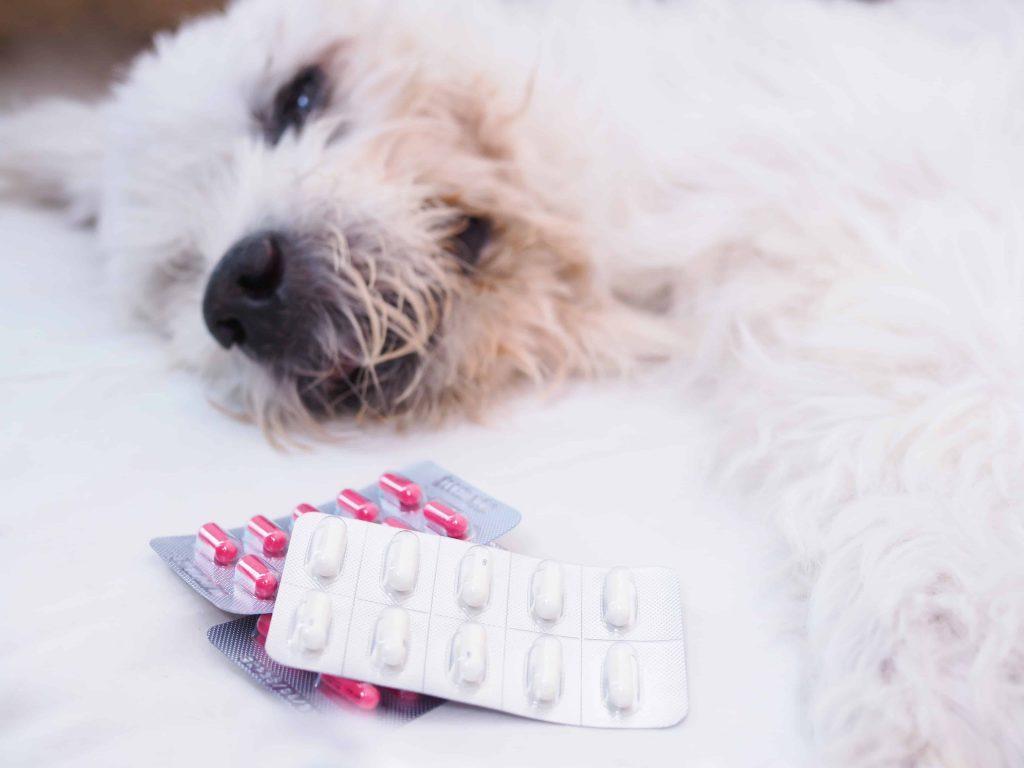It’s scary to see your beloved dog shaking with convulsions that never seem to end.
There are several types of canine seizures and different triggers – including environmental causes that can be prevented.
Many isolated seizures aren’t dangerous and dogs make a full recovery on their own.
But other types are serious and can lead to permanent brain damage, especially if they last for more than five minutes.
This is why it’s crucial to take your dog to the vet as soon as you suspect a seizure has occurred.
What is a canine seizure?
A canine seizure is a neurological condition that occurs when the brain is disturbed by an uncontrollable electric impulse (triggered by multiple causes).
Abnormal brain activity temporarily warps communication with the rest of the body. As a result, there may be a single fit or multiple seizures over a short timeframe. It’s also possible for seizures to return after an extended period of having no seizures.
It’s common for dogs to have seizures – vets regularly treat patients for this very issue!
There’s usually little reason for concern when dogs have short, isolated seizures (less than three minutes). Having said this, it’s still crucial to seek proper veterinary attention, to make sure there’s no damage to the brain (rare with short isolated seizures).
It’s a different story for multiple seizures that occur in clusters (close together), or long seizures that last for more than a few minutes.
The risks of brain damage are higher, and there’s sometimes an underlying condition that needs to be treated medically. This is considered an emergency situation, and you should see your vet (or an emergency vet) straight away.
What can trigger a seizure in a dog?
Abnormal electrical activity in the brain can be caused by triggers from inside or outside the skull – the underlying factor isn’t always obvious.
Take epilepsy, for example. This condition is characterised by recurrent seizures over a lifetime. It’s the most widespread type of neurological problem for canines, but whatever causes it remains a mystery. It may be genetic (idiopathic epilepsy), arise from structural issues in the brain (structural epilepsy) or another reason that’s completely unknown.
Other causes behind canine seizures:
- Toxins from particular chemicals and foods
- Heat exhaustion
- Kidney disease
- Anaemia
- Liver disease
- Trauma to the head
- Tumours in the brain
- Obstructed blood vessels (embolism)
- Certain dog medications, such as some antidepressants
- Diabetes
- Electrolyte imbalances
- Heartworms
- Low blood sugar
- Certain infectious diseases, such as Toxoplasma or Lyme disease
- Nutritional deficiencies, such as thiamine, magnesium, zinc or folic acid
- Stress
As previously noted, canine seizures are often caused by exposure to toxins.
Examples of harmful substances for dogs:
- Chocolate
- Mushrooms
- Sago palm
- Ethanol
- Xylitol
- Rodent poisoning
- Antifreeze
- Human medications such as Ibuprofen, Ivermectin, Amphetamines and Procaine Penicillin G
For a more comprehensive list, please visit this page.
If you suspect your dog has been poisoned, please book an emergency appointment with your vet. You can also get advice from the Animal Poisons Helpline (1300 869 738).

Signs of seizures in dogs
Four different kinds of seizures:
- Generalised (grand mal) seizures are most common in dogs – impacting the entire brain and body. This is when convulsions and loss of consciousness may occur, usually for a few minutes.
- Partial seizures (focal) last for only a few seconds and are characterised by one part of the body having a seizure. You may see unusual movement in one body part, or one side of the body.
- Psychomotor seizures are difficult to detect, because dogs behave strangely for only a few minutes. If your dog has this seizure more than once, expect him to demonstrate the same actions, such as chasing his tail.
- Idiopathic epilepsy: seizures that cannot be categorised after diagnosis has occurred, because causes are unknown.
You don’t need to figure out what kind of seizure your dog is having, just look out for these general symptoms:
Before the seizure:
- Hiding
- Nervousness
- Unusual clinging behaviour
- Whining
- Excess drool
- Shaking
- Pacing around
During the seizure:
- Trembling or twitching (entire body or particular limbs)
- Staring off into space
- Losing control of bladder and bowel movements
- Vomiting
- Frothing at the mouth
- Unconsciousness
- Drooling
- Chewing on tongue
- Stiffness
- Aggressive behaviour
- Paddling the feet
- Falling onto the floor
- Running around in circles
- Biting
Immediately after the seizure:
- Disoriented
- Drooling
- Pacing around
- Restless
- Temporary blindness (rare)
What to do when your dog has a seizure
The first step is always to stay calm, so you can think clearer and your frazzled energy doesn’t frighten Pooch even more. Speak in a soothing tone.
Don’t pat your dog because he doesn’t have control of his body and may accidentally bite or scratch you. Keep children and other pets away.
Make sure there are no hazards, and close all doors and escape routes, so he doesn’t run away after the convulsions. If he could fall off an edge, gently push him to a safer location.
Sit nearby and observe. Write down notes that you can relay to the veterinarian later. If you have the presence of mind, time the seizures. If the seizure lasts for more than five minutes, you need to take your dog to the vet straight away.
Isolated seizures that last for less than a few minutes generally aren’t emergencies but you should still call your vet and get their advice. You may want to wrap your dog in a blanket after his seizure, but only if he’s returned to normal and usually tolerates hugs.
Make sure there’s food and water available, in case he’s hungry, but don’t push the food onto him.
Treatment for canine seizures
If your dog is still convulsing when you visit the vet, medication will be administered to stop the seizure.
A thorough examination will then be conducted to diagnose the underlying cause, if there’s one that can be identified. As part of this diagnostic process, the vet will ask you for details about the episode, before taking blood and urine samples. Sometimes X-rays and electrocardiograms are needed too.
Anticonvulsant medication may be prescribed, but this isn’t always needed for recovery. The vet will advise you about the best treatment plan and if any lifestyle changes are required.
If an underlying condition has been diagnosed, the approach will be different. For example, steroids may be administered for a brain tumour that is surgically removed.

How to prevent seizures in dogs
Most of the time you can’t prevent a seizure from occurring, especially when there’s no clear diagnosis.
Having said this, seizures that are caused by toxins can be prevented by making sure that all medications, chemicals and cleaning products are securely stashed away. If you’re a chocoholic, don’t leave these treats lying around for curious pups to find! The same advice applies for any food that’s toxic to dogs, such as mushrooms.
Ask your vet about the best diet to reverse any nutritional deficiencies or blood sugar issues that may contribute to seizures. Focus on foods that provide adequate levels of magnesium, taurine, zinc, folic acid and calcium – as well as Vitamins A, D and B6.
Finally, make sure your pooch is in a relaxing and nurturing environment, as stress can make seizures worse.
Potiki dog insurance for canine seizures
The cost of treating seizures can range from $300 to $7,000 a year – depending on the complexity of the condition and the type of medication required.
If you have reliable pet insurance, you don’t have to worry about budgeting to pay for this. Your policy would cover most of the costs, as long as it’s not a pre-existing condition.
Potiki’s affordable pet insurance is your safety net…but what if you never need to lodge a claim? Is that a waste of money?
No, you still get good value:
We send you free Potiki Perks to help you take care of your beloved canine’s general wellbeing.
All customers get access to Potiki Perks#. Potiki Perks# comes with the free Potiki Perks app offering exclusive offers, 2-for-1 deals, and up to 20% off in categories like dining, activities, shopping, travel, and more. You will also have access to myPetPass™** which unlocks extra support and savings on everyday pet essentials such as online vet care, discounted pet prescription medication and savings on premium pet food.
This is on top of reliable Potiki pet cover (via petinsurance.com.au) that pays for 80 per cent of your eligible vet bills for unexpected illness and injury.
- Get a quick Potiki quote to find out what your premium will cost for one year.
- Submit payment if you’re satisfied with that amount (email us on [email protected] with any questions).
- Log into your personal portal to select items for your Potiki Perks package, which will be swiftly delivered to you.
- Lodge a claim if you need help paying vet bills for unexpected sickness or injury.



